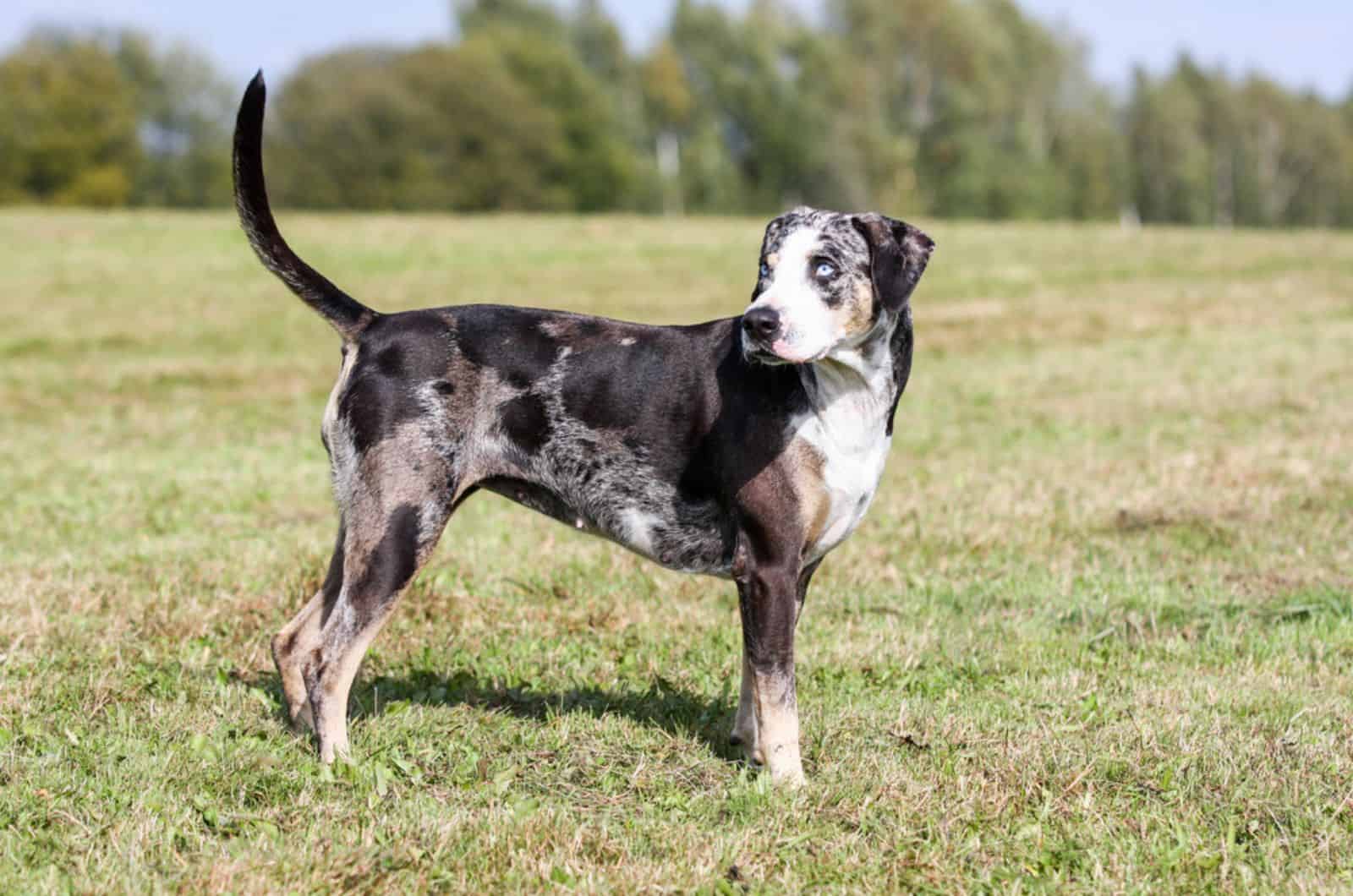If you’re considering the idea of having a Catahoula puppy in your home, it would be great to know what to expect out of this medium to large dog in terms of its dimensions.
The Catahoula growth chart helps us better understand the idea of a Catahoula puppy’s size, which is why every responsible owner should do a little research prior to purchase.
Originally coming from Louisiana, Catahoula Leopard dogs are an active breed that requires plenty of space. That said, the breed is generally recommended for an owner with a spacious home and a big back yard.
Still, this is not a massive dog, such as a Great Dane or an English Mastiff. They adapt to indoor life easily as long as you give them enough exercise during the day.
In order to make a decent family dog out of your Catahoula, you need to anticipate its needs during each of its growth stages. But first, let’s take a look at the puppy’s growth chart!
The Catahoula Growth Chart
[table id=706 /]
[table id=707 /]
The Catahoula Puppy Throughout Life Stages
Even though the Catahoula growth chart helps us better understand the ultimate growth of this puppy, we need a little bit of insight on what happens in each stage of its life.
This short-haired, spotted dog breed goes under different, yet equally important growth stages that help the puppy grow into a strong, independent, and watchful adult dog.
We will try to explain each of the stages in detail in order to see what to expect during the first couple of weeks, as well as in the life stages that follow.
Early Puppyhood
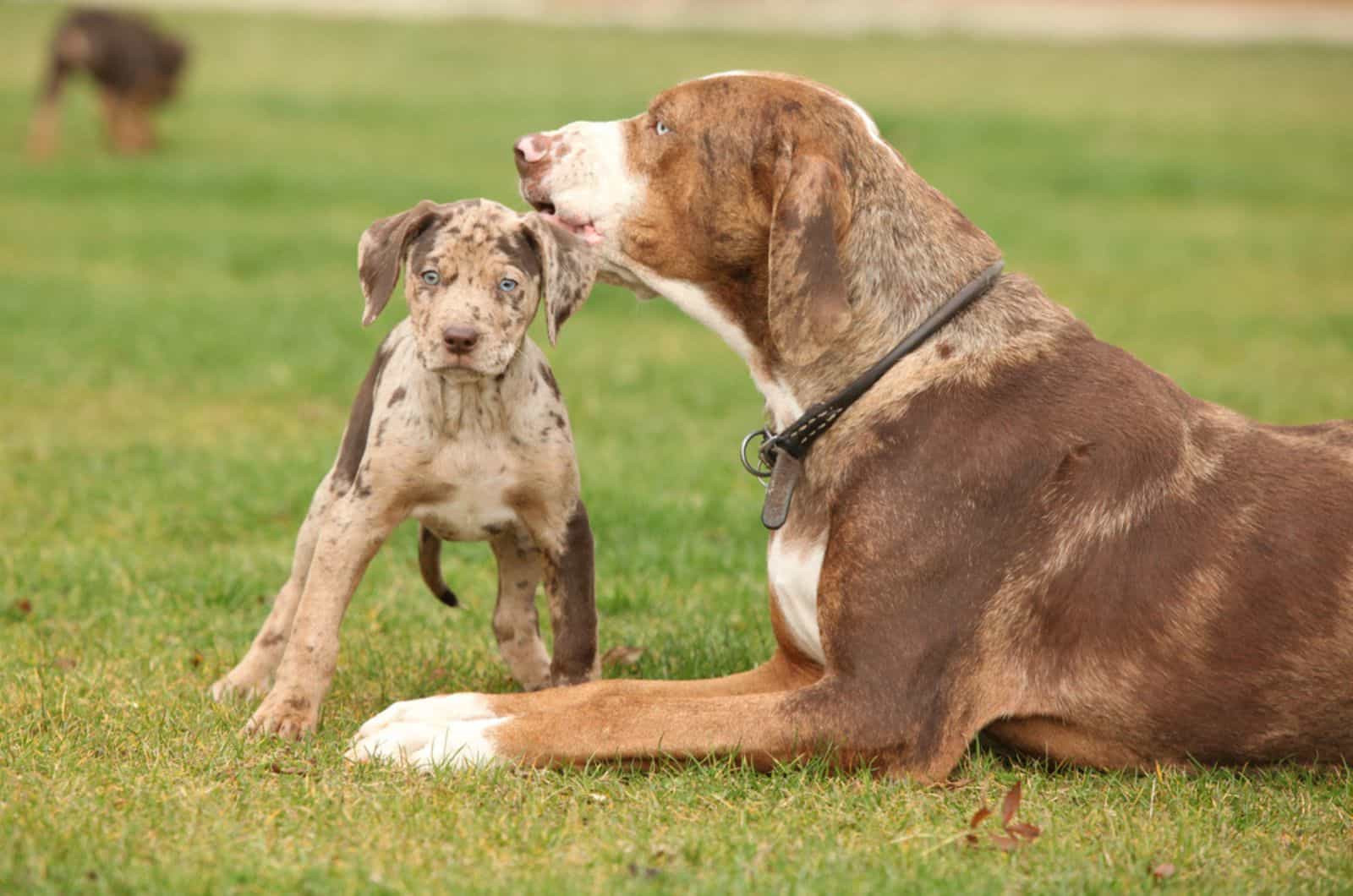
The early puppyhood stage is crucial for the overall Catahoula growth chart. Early puppyhood is considered to be the first eight weeks of a puppy’s life. During this period of time, Catahoula dogs need to be next to their mother and other littermates.
Keeping them warm and nurtured is the key to their well-being. Furthermore, an owner needs to make sure their mom’s milk is accessible at all times.
Puppies that don’t have access to their mom’s milk need to be provided with a puppy milk replacer that contains nutrients, such as calcium and carbonate.
Feeding newborn puppies with regular milk is not an option as these pooches are lactose intolerant.
The first puppy teething symptoms are to be expected at this age, too. The so-called weaning process starts a week or two later, which is the perfect time to start feeding your canines with the best dog food for this age.
A gruel of canned food combined with a puppy milk replacer and water is a good place to start.
Juvenile Age
Even though the puppyhood stage is considered to be until a dog turns 18 months of age, puppies should be carefully supervised and socialized within the first couple of months.
That said, the late puppyhood stage that is crucial for socialization training is between eight weeks of age, and it lasts until a dog turns ten months of age.
Eight weeks of age is the perfect time to start potty training, as well as to implement the first positive reinforcement techniques in your dog’s training.
The use of interactive dog toys, healthy snacks, as well as praising and petting can be of great use when socializing a Catahoula puppy.
As these pooches are not as easy-going as Retrievers or Maltese, nor are they as overwhelming as Bulldogs or Dachshunds, we can say that Louisiana Catahoula pooches are decent family dogs that need moderate training.
Furthermore, during this stage of life, puppies have already transitioned to regular wet or dry food, and they require two to three cups of fresh food on a daily basis.
Make sure to provide their meals timely, and at least three times a day, as well as to always provide them with fresh water.
Bear in mind that this is a very active dog that seeks exercise even during the first couple of months. Moderate, backyard frolicking, and a light walk will suffice its daily needs.
Exercise is a great way to mentally stimulate your dog, as well as to teach the first set of puppy manners.
Adolescence
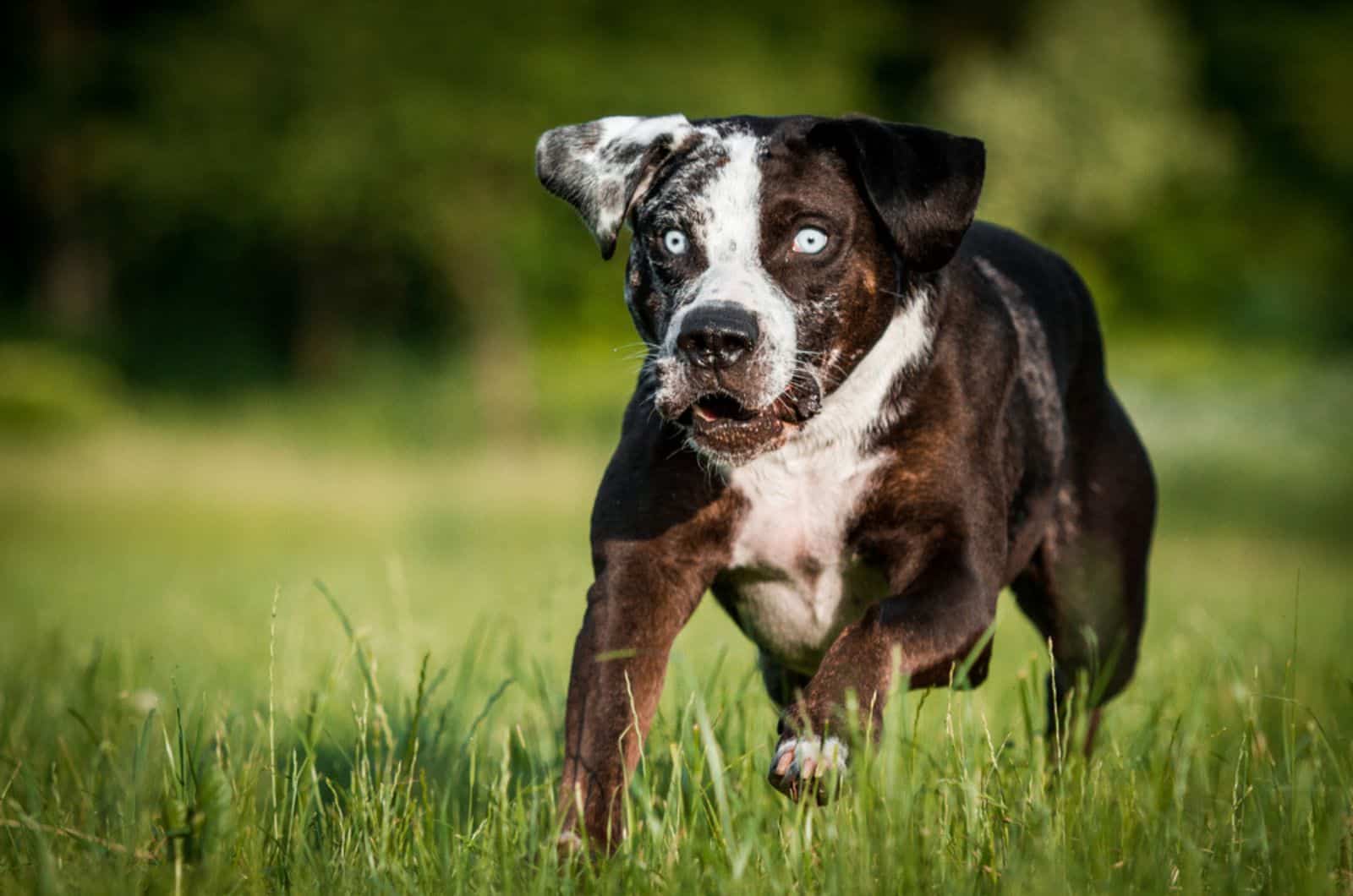
The adolescent stage generally begins at six to ten months of age, and it represents an important part of a Catahoula Leopard puppy’s life. If you are wondering when to spay or neuter your dog – this is the perfect time!
Spaying or neutering a dog after the first ten months is not the best choice as the surgical procedure is generally more complex, and the recovery period for a puppy is longer.
Proper monitoring after spaying or neutering is required, as running, or jumping after spaying or neutering surgery is not recommended.
By the conclusion of this stage, your dog will transition from the puppy weight to its average weight. That said, this large breed will be between 21 and 25 inches tall.
You can also expect to deal with a slightly stubborn and high-energy Catahoula puppy during adolescence.
This is a completely natural process that affects all breeds equally. Eventually, your pooch will calm down by ten to twelve months of age, when their adulthood stage begins.
Adulthood Stage
The adulthood stage is as important to the Catahoula growth chart as other stages of its life. Generally, these AKC-recognized puppies, as well as Catahoula mixes, reach their adult weight around twelve months of age.
Pay close attention to your dog’s size chart during adulthood as some puppies can be underweight due to poor feeding habits. On the other hand, excessive weight gain is not good for adult dogs as it triggers diseases, such as obesity and eye problems.
According to the American Kennel Club, the ideal adult size of a Catahoula puppy is 50 to 95 pounds in weight, and 22 to 24 inches in height.
These herding dogs need three to five cups of high-quality food during the day as they burn off energy faster than many other dogs of their size.
Early-socialized Catahoula puppies won’t have any unpredictable outbursts, which is why you should expect to have a reliable, good family dog by the time your pooch turns 12 months old.
Factors Impacting The Catahoula Growth Chart
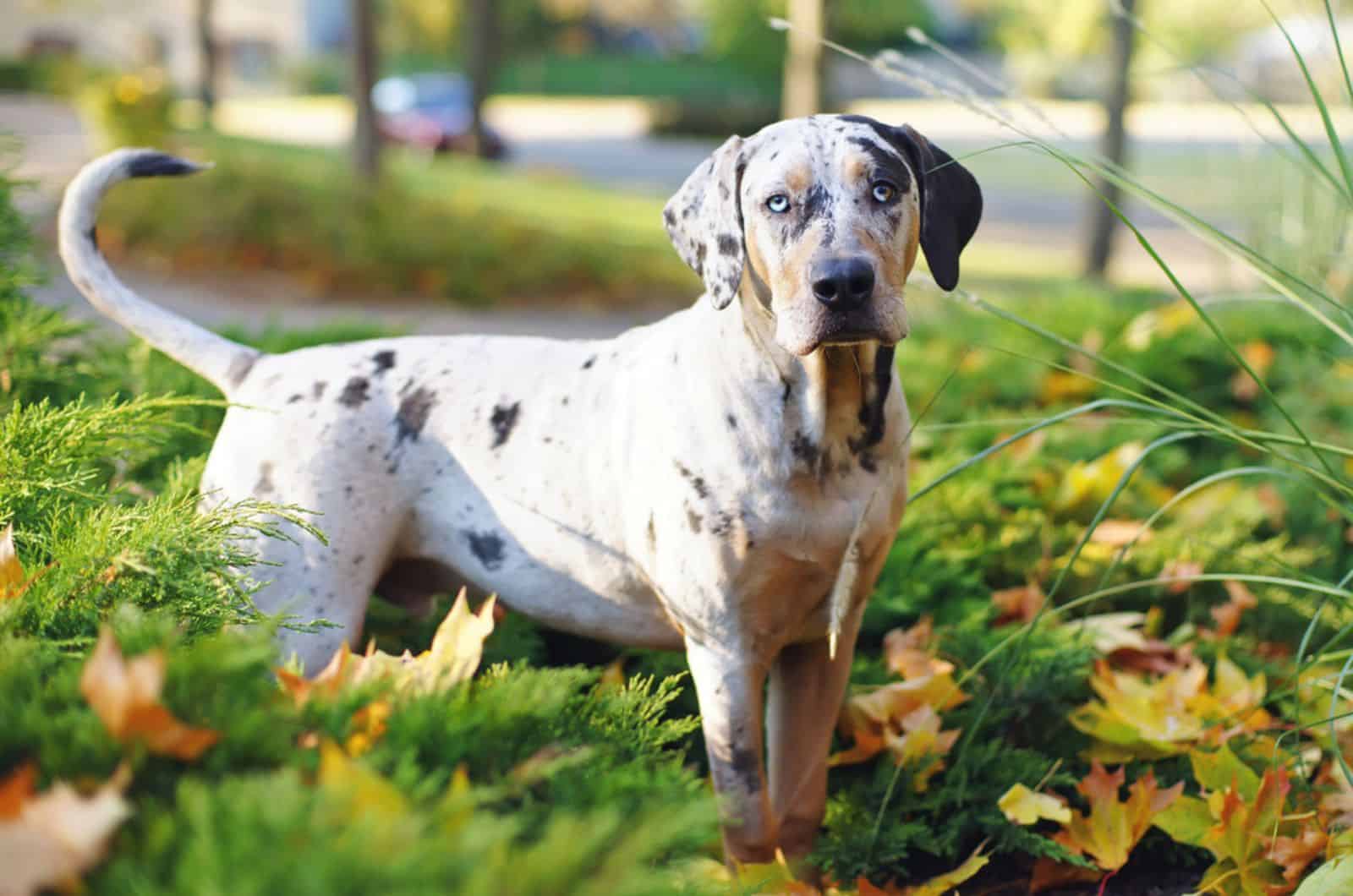
Dog owners should be aware of the fact that there are several factors impacting the Catahoula growth chart, such as genetics, health issues, dieting, and exercise.
The ‘‘how big do Catahoulas get’’ issue is not only the matter of their natural growth, but it rather depends on a plethora of circumstances that affect each puppy individually.
However, reliable Catahoula breeders make sure you get a health-tested, disease-free and well-fed Catahoula canine at eight to ten weeks of age.
1. Genetics
Puppy’s parents play an enormous role in their offspring’s size, and they serve as a good indicator of how your dog will look in the future. That said, a dog’s size greatly depends on their parents’ size.
It is unrealistic to expect that the size of a Catahoula puppy will be enormously different from the size of their parents, so if your pooch has smaller-sized parents, expect to have about the same dog.
If it takes too long for your dog to gain weight – that may be a cause for panic.
However, some small dogs (relatively small, as the smallest Catahoula is around 50 pounds heavy) stay that way simply because of their genes. And, there is nothing much you can do about it except make sure that your puppy gets the best owner treatment possible.
2. Health Issues
Even though Catahoula puppies don’t qualify among the healthiest breeds in the world, these pooches are still quite healthy. However, some puppies can face major issues such as hip dysplasia, deafness, eye problems, and hypothyroidism.
Even though the first three don’t affect the Catahoula’s growth chart significantly, hypothyroidism can be the reason why some puppies are excessively overweight.
If your Catahoula puppy is overweight at its current age, you should look for other symptoms such as cold intolerance, lethargy, dry hair, and a very dark pigmentation in the skin.
All these symptoms are related to hypothyroidism, which is a red flag that requires immediate vet intervention.
3. Dieting
Dieting is an important process for the healthy growth of every dog. That said, you should strictly follow the Catahoula growth chart, and feed your dog accordingly.
These pooches require between three to five cups of high-quality food on a daily basis. However, a dog cannot reach its full potential by eating table scraps or poor-quality foods.
Moreover, bad dieting is a trigger for many diseases such as diabetes, obesity, and heart disease.
Additionally, skipping meals can be a direct reason why your puppy is underweight or lethargic at times. The Catahoula puppy burns off a lot of energy during the day, which means that these puppies need regular food intake to remain energetic and playful.
If you’re worried about your puppy not reaching its full size potential – revise its daily feeding habits first.
4. Exercise
Exercise is as equally important for your pooch as dieting. Even though this is not an aggressive dog breed by nature, exercise helps them maintain their mental stability and a positive attitude.
On the other hand, exercise helps your puppy burn off its daily calories, which has a positive impact on its overall health. Obese Catahoulas are never an option as these pooches are naturally playful, active, and athletic.
Additionally, obese Catahoula puppies can be self-destructive and aggressive, even towards their owner. These are the things that no owner would want in their pet, no matter how cute they look while voraciously eating.
Providing your Leopard dog with at least an hour of high-intensity exercise during the day is a must for a healthy puppy.
When Does A Catahoula Dog Stop Growing?
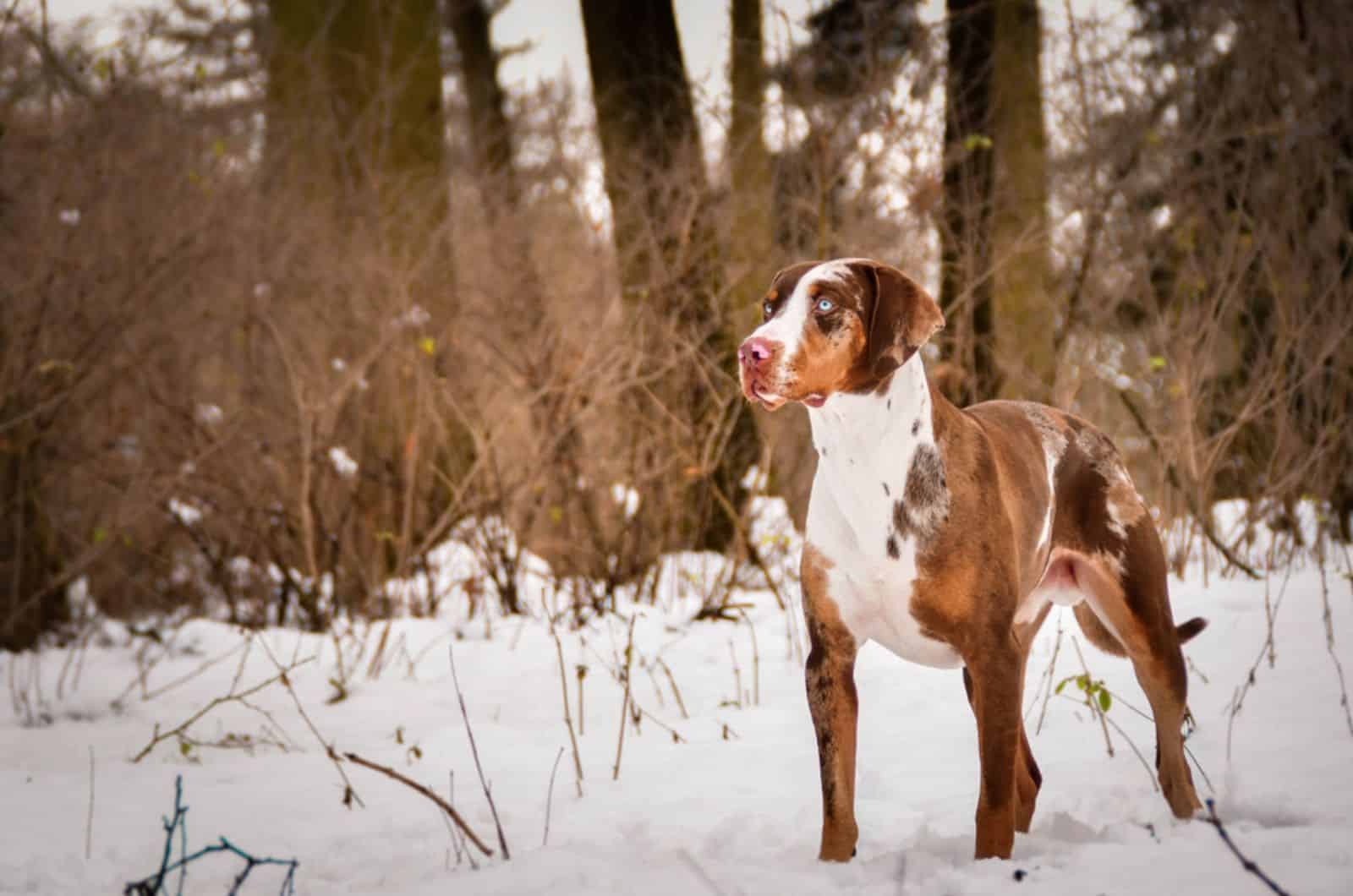
Generally, these puppies reach their adult size by the time they turn twelve months of age. However, some puppies can stop growing even before this age due to their genetics or gender.
That said, female Catahoulas will naturally reach their adult size faster than their male counterparts.
On the other hand, it is not unnatural to see a dog reaching its full size after the first twelve months. Some dogs become fully grown at sixteen or eighteen months of age.
If you’re worried that your dog is not as heavy as it should be at its current age – don’t panic. It may need some more time to get there eventually.
Conclusion
The Catahoula growth chart is an important matter that helps you predict and determine the size of your pet.
Throughout this article, you were able to see what this Leopard dog should look like throughout its life stages, as well as what things you should expect in each of these stages individually.
Hopefully, you found some useful information that will help you provide a better life for your Catahoula pooch!
Read more: Bullmastiff Growth Chart: They’re Large & They’re In Charge
